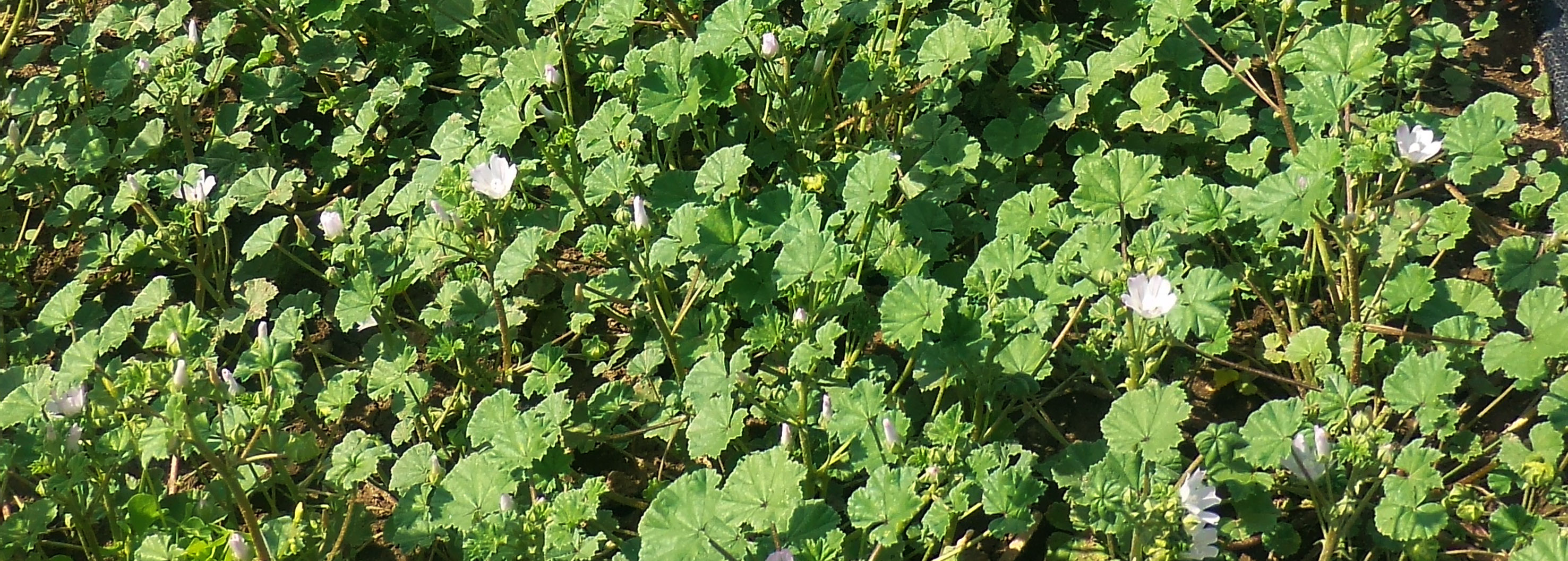
Malva pusilla (low mallow)
Malva pusilla is an annual/biennial plant originating in Eurasia, where it traditionally has been used as a medical herb. The species grows up to 30 cm high. The whole plant is edible, and flowers are decorative with a mild flavor and a color varying from white to purple or pink. It may also be used as a garden flower. Dyes in green or yellow can be obtained from both plant and seed. Mallow is easily grown, preferably in rich soils with sunny setting. The plant is frost tolerant and self-fertile, pollinated by bees and flowers from June to September. The medical uses for low mallow are the same as for other mallow species, although Malva pusilla is less active than for example common mallow and marsh mallow. Uses include external treatment of bruises, insect bites, diseases of the respiratory system and inflammation of the urinary- and digestive systems. Leaves and flowers are the most used parts, and these can be eaten as they are or used in tea.
Cultivation
Start the sowing in early April in a broadcast tray under light conditions (preferably in greenhouse at 20-23° C). Initially tray substrate should be used. Cover the seeds to a depth of 0.5 cm. Transplant the plants into small individual pots in pot substrate when large enough to handle. The pots can be placed in an unheated greenhouse, or outside when no risk of frost. Plant outside in field when fully rooted.
Family: Malvaceae
Swedish: vit kattost
Finnish: kylämalva
Norwegian: dvergkattost
Danish: liden katost
Icelandic: dvergastokkrós

The seeds are known to be very resistant and can remain dormant for many decades.
Low mallow tolerates a wide range of soil types and prefers a sunny setting. As with several other mallow species, low mallow is highly susceptible to rust. Make sure to use suitable crop rotation to moderate damages. Depending on the growing conditions, some years some plants will provide seeds the first season, other years not until the second season. The outcome is dependent on geography and weather. Seed harvest will normally take place in August/September. Due to the extended flowering period, seeds can mature gradually and unevenly. The seeds forms a round “cheese” and when mature they can easily be separated from each other. Harvest when seeds are brownish and dry and always in dry conditions. The seeds are known to be very resilient and can remain dormant for many decades.
